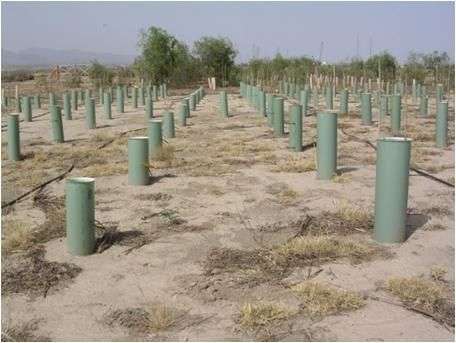Technologies at the service of ecosystem restoration

Researchers at the Universidad Politecnica of Madrid have developed techniques for species recovery of damaged ecosystems in dry Mediterranean regions.
The ecosystem restoration in semidry areas is a priority and a complex challenge due to the difficulties presented by natural agents to restoration. The massive implantation of vegetal covers over the whole field would be a solution, but it is an expensive task and it has high failure rates.
Therefore, searching for other possible solutions, a researcher at the School of Forestry of the UPM along with experts from other institutions have launched a strategy to boost the restoration process by introducing key species in specific areas or in diversity in the shape of islands.
The Z. Lotus is a thorny shrub found in arid coast zones of Southeastern Spain. They are highly degraded and have minimal rainfall. However, this species can achieve a large size and to expand in surfaces becoming in valuable elements because their protector features against erosion, being a wildlife refuge and also for germination of other plant species that could colonize the environment from them.
The researchers tested deep planting as a method to reduce the mortality of these shrubs and to enable their restorative action. Deep planting makes the root is introduced various centimeters deeper, and this is essential to connect the roots with the wetter layers of the soil, which are roots unable to dry even during summer.

The research, which was published in New Forests journal, found that the deep planting using protective tubes to prevent collapse of the surrounding soil improves the access roots and can reduce mortality up to 20%, making it viable the planting without risk of establishment. This technique can be applied to other species plantation in semi arid areas without having an additional cost compared to standard surface plantations except to employ protective tubes, which are convenience to use in diverse plantation to defend plants against predators.
More information: Oliet, J. et al. Deep planting with shelters improves performance of different stocktype sizes under arid Mediterranean conditions. New Forests 43 (5-6): 925-939. Sep 2012.
Provided by Madrimasd


















